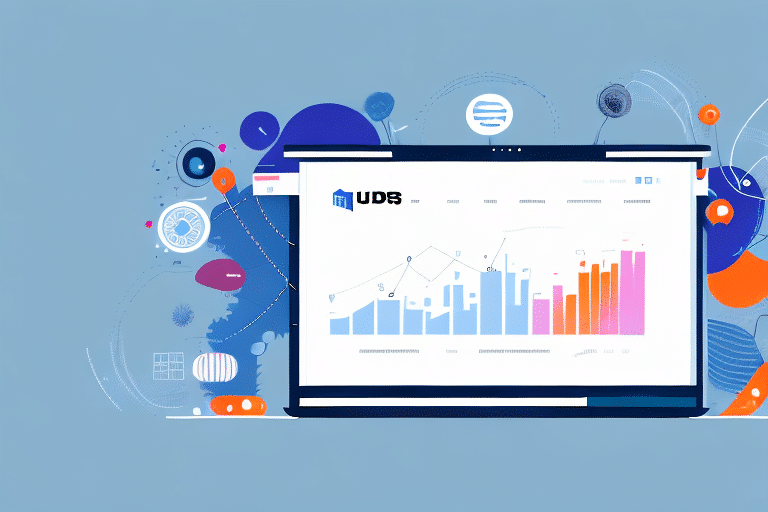How to Connect, Optimize, and Manage UDS for PrestaShop
If you are running an online store on PrestaShop, you understand the importance of having the right tools to manage and optimize your business effectively. One such tool is the Universal Data Sync (UDS), which can help you connect, optimize, and manage your store seamlessly. In this article, we will dive deep into UDS and explore how it can enhance your PrestaShop store's performance and user experience. We will discuss the benefits of using UDS, how to connect it to your store, optimize UDS for best results, and troubleshoot common integration issues. Finally, we will cover advanced techniques and tools that can help you unlock the full potential of UDS and elevate your PrestaShop store to new heights.
What is UDS and Why is it Important for PrestaShop?
UDS stands for Universal Data Sync, a tool that allows you to synchronize your eCommerce data across multiple platforms and tools. UDS enables you to connect, optimize, and manage your PrestaShop storefront with ease. It is crucial for PrestaShop as it provides a seamless integration solution for all your eCommerce needs, including data synchronization, order tracking, inventory management, and more. By streamlining your online store's operations, UDS reduces manual errors and minimizes data inconsistency across different platforms.
Key Benefits of UDS
- Real-Time Inventory Management: Maintain accurate inventory levels across multiple sales channels, preventing overselling and stockouts.
- Comprehensive Reporting and Analytics: Access detailed reports on sales, revenue, and customer behavior to make informed, data-driven decisions.
- Enhanced Operational Efficiency: Automate routine tasks, reduce manual data entry, and minimize errors, allowing you to focus on growing your business.
Benefits of Using UDS for Your PrestaShop Store
There are numerous benefits to using UDS for your PrestaShop store, including:
- Data Synchronization: UDS syncs all your eCommerce data, including products, orders, customers, and inventory, across multiple platforms and tools, simplifying store management.
- Order Tracking: Track all your orders from various sales channels in real-time, reducing errors and improving customer service.
- Inventory Management: Effectively manage your inventory levels to prevent overselling or underselling of products.
- Reduced Manual Errors: Automating data synchronization reduces the likelihood of errors that can occur with manual processes, ensuring smooth store operations.
Additionally, UDS offers:
- Automated Marketing: Automate your marketing campaigns, including email marketing, social media advertising, and retargeting, to reach a wider audience and increase sales.
- Real-Time Analytics: Access real-time analytics and reports on your store's performance, including sales, traffic, and customer behavior, enabling you to make strategic decisions.
How to Connect UDS with Your PrestaShop Store in Simple Steps
Connecting UDS with your PrestaShop store is a straightforward process:
- Create an Account: Sign up for an account on the UDS platform.
- Connect Your Sales Channels: Link your various sales channels, including PrestaShop, to the UDS platform using API keys.
- Select Data to Sync: Choose which data points you want to synchronize across your platforms, such as products, orders, and customer information.
- Start Syncing: Click the "sync" button, and UDS will begin synchronizing your data across platforms in real-time.
UDS also offers a variety of customization options. You can set up automatic syncing at regular intervals or manually sync data as needed. Additionally, UDS provides detailed analytics and reporting tools to help you track your sales and customer data across platforms.
Tips for Optimizing Your UDS in PrestaShop
Optimizing your UDS in PrestaShop can help you maximize the tool's benefits. Here are some tips to enhance your UDS performance:
- Customize Your Sync Settings: Adjust your sync settings to align with your business requirements, including the frequency of data synchronization.
- Monitor Data Consistency: Regularly check data consistency across platforms to ensure UDS is functioning correctly.
- Map Your Data Intelligently: Strategically map your data points across platforms to fully utilize UDS capabilities.
- Segment Your Data: Organize your data effectively across different sales channels through data segmentation.
Additionally, regularly updating your product information is crucial. Keeping your product details current helps avoid data inconsistencies and errors, thereby enhancing sales and improving the customer experience. Staying competitive requires that your customers have access to the most accurate and relevant product information.
How to Manage and Configure UDS for Best Results in PrestaShop
Proper management and configuration of UDS are essential for achieving optimal results. Follow these best practices:
- Create a Backup: Always back up your store's data before syncing it with UDS to prevent data loss in case of inconsistencies.
- Configure Custom Fields: Set up custom fields to tailor UDS to your specific business needs, enhancing store performance.
- Utilize Filters: Use filters to limit the data being synced, which can save resources and reduce dashboard clutter.
- Set Up Notifications: Enable notifications to stay informed about any data synchronization or integration issues with UDS.
Troubleshooting Common Issues with UDS Integration in PrestaShop
While UDS is a powerful tool, integration issues may occasionally occur. Here are some common problems and their solutions:
- Inconsistent Data Fields: Ensure that data field mappings across platforms are consistent to prevent synchronization issues.
- Outdated API Keys: Verify that your API keys are current, as outdated keys can disrupt data synchronization.
- Server Connection Issues: Check your server connection settings, including firewalls and network configurations, to resolve syncing problems.
- Sync Frequency: Optimize your sync frequency settings to match your store's needs and prevent performance issues.
Best Practices for Using UDS in Your PrestaShop Store
To maximize the benefits of UDS in your PrestaShop store, implement the following best practices:
- Keep Your Data Clean: Maintain organized and accurate data to fully leverage UDS capabilities and achieve better results.
- Regularly Monitor Data Consistency: Continuously check data consistency across platforms to prevent integration issues and enhance store performance.
- Consider Custom Data Fields: Implement custom data fields to better align UDS with your business strategies and optimize your eCommerce operations.
- Invest in Analytics: Utilize analytics to gain deeper insights from UDS data, helping you make informed decisions to improve your store's performance.
Advanced Techniques for Leveraging the Power of UDS with PrestaShop
Implementing advanced techniques can help you fully exploit UDS's potential in PrestaShop. Consider the following strategies:
- Integrate with Other Tools: Connect UDS with tools like Google Analytics to gain more comprehensive insights into your store's performance.
- A/B Testing: Conduct A/B testing on different data synchronization strategies to identify the most effective methods for optimal performance.
- Customized Data Mapping: Tailor your data mapping across platforms to meet your specific business needs and eCommerce strategies.
- Automate Workflows: Use UDS to automate workflows, reducing manual errors and saving time on data syncing and inventory management.
Improving User Experience with UDS Features in PrestaShop
UDS offers features that can significantly enhance the user experience on your PrestaShop store:
- Real-Time Sync: Provide customers with accurate information regarding their orders and inventory by synchronizing data in real-time.
- Custom Fields: Streamline your data with custom fields to offer a more organized and efficient browsing experience for customers.
- Product Recommendations: Leverage UDS data to offer personalized product recommendations based on customers' browsing history and purchasing behavior.
- Easy Checkout: Streamlined checkout processes can improve user experience and reduce cart abandonment rates.
Integrating UDS with Other Tools and Platforms for Enhanced Performance in PrestaShop
Enhance your PrestaShop store's performance by integrating UDS with other tools and platforms:
- Google Analytics: Gain better insights into your store's performance by integrating UDS with Google Analytics.
- Inventory Management Tools: Optimize your inventory levels and prevent stockouts or overselling by connecting UDS with inventory management tools.
- Marketing Automation Systems: Streamline your marketing strategies and improve store performance by integrating UDS with marketing automation tools.
- Third-Party Sales Channels: Expand your reach and grow your business by integrating UDS with various third-party sales channels.
Understanding Analytics and Insights from UDS Data in PrestaShop
Analytics and insights derived from UDS data are crucial for improving your store's performance. Consider the following analytics when using UDS in PrestaShop:
- Sales Data: Analyze which products and categories are performing well to identify areas for improvement.
- Customer Data: Understand customer behavior to tailor your marketing strategies and product offerings effectively.
- Inventory Data: Optimize your inventory levels to avoid stockouts and overselling, ensuring a smooth shopping experience for customers.
- Synchronization Metrics: Monitor how effectively UDS is syncing your data across platforms to identify opportunities for optimization.
By following these guidelines, you can effectively connect, optimize, and manage your PrestaShop store using UDS. UDS provides a robust solution for streamlining your eCommerce operations and delivering an excellent user experience to your customers. Leveraging UDS will help you optimize your online store and achieve greater success with your eCommerce strategy.
Thanks for reading!






















